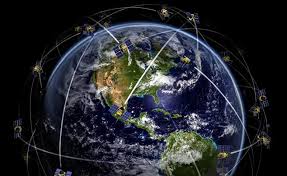
Breaking News
 America's Fraud Is Bigger Than You Think
America's Fraud Is Bigger Than You Think
 Anti-Aging Drug Regrows Knee Cartilage in Major Breakthrough That Could End Knee Replacements
Anti-Aging Drug Regrows Knee Cartilage in Major Breakthrough That Could End Knee Replacements
 First Nation Innovates Prefabricated Housing System from Locally-Sourced Wood
First Nation Innovates Prefabricated Housing System from Locally-Sourced Wood
 Why Americans Love Individualism But Hollywood Fights It
Why Americans Love Individualism But Hollywood Fights It
Top Tech News
 Kawasaki's four-legged robot-horse vehicle is going into production
Kawasaki's four-legged robot-horse vehicle is going into production
 The First Production All-Solid-State Battery Is Here, And It Promises 5-Minute Charging
The First Production All-Solid-State Battery Is Here, And It Promises 5-Minute Charging
 See inside the tech-topia cities billionaires are betting big on developing...
See inside the tech-topia cities billionaires are betting big on developing...
 Storage doesn't get much cheaper than this
Storage doesn't get much cheaper than this
 Laser weapons go mobile on US Army small vehicles
Laser weapons go mobile on US Army small vehicles
 EngineAI T800: Born to Disrupt! #EngineAI #robotics #newtechnology #newproduct
EngineAI T800: Born to Disrupt! #EngineAI #robotics #newtechnology #newproduct
 This Silicon Anode Breakthrough Could Mark A Turning Point For EV Batteries [Update]
This Silicon Anode Breakthrough Could Mark A Turning Point For EV Batteries [Update]
 Travel gadget promises to dry and iron your clothes – totally hands-free
Travel gadget promises to dry and iron your clothes – totally hands-free
 Perfect Aircrete, Kitchen Ingredients.
Perfect Aircrete, Kitchen Ingredients.
 Futuristic pixel-raising display lets you feel what's onscreen
Futuristic pixel-raising display lets you feel what's onscreen
SpaceX is approved to build 1 MILLION 'user terminals' that will connect people to...

SpaceX is plowing ahead with its plans to beam high speed internet to Earth from a constellation of satellites.
This week, the Elon Musk-owned aerospace company received approval from the FCC to build 1 million user terminals on Earth that are meant to support its Starlink project - a constellation of mini satellites that will eventually beam high speed internet down to Earth.
The terminals will be able to receive signals from space and relay them to users on Earth.
According to the approval, SpaceX now has a 'blanket license for the operation of up to 1,000,000 fixed earth stations that will communicate with its non-geostationary orbit satellite system.'
As reported by CNET, Musk has said that terminals will look like a 'little UFO on a stick' that maneuver to catch the signals beamed down from the satellites.
Musk has also said that the terminals will be easy to install and can be 'plugged in and pointed at the sky.'
The approval is the next step in SpaceX says it plan to speckle low-Earth orbit with its mini satellites.



